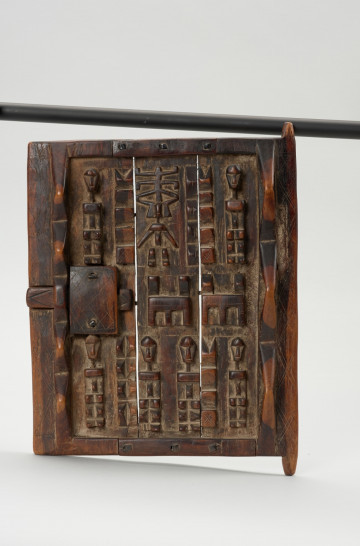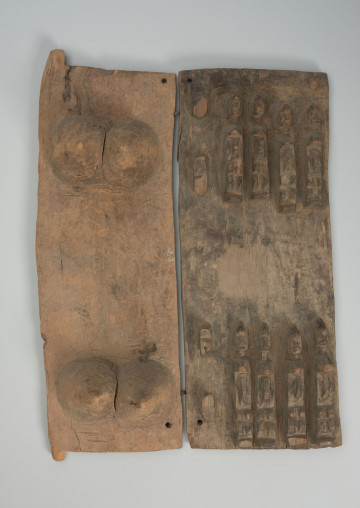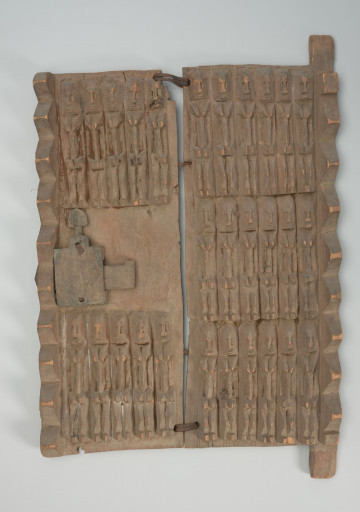
Granary door
między 1951 — 1989
National Museum in Szczecin
Part of the collection: Collection of Dogonian art
Granaries (guyon, singular: guyo) indicate wealth and family size. The greater their number, the more numerous and richer the family is. A young couple usually has two, one for each spouse, while large families with many children may have up to 15 guyon. Granaries in Dogon country are built on a circular or square plan, their diameter or side usually does not exceed 2, and their height reaches 3 metres. They always stand on large stones or tree trunks. Two types of roofs can be observed among the granaries: flat and semi-circular. They are covered with a conical thatch made of konko grass, which protects the walls of the guyo from rain. The thatch is not permanently attached to the structure of the granary and can be quickly thrown off in case of fire. The floor is made of cut branches or millet stalks and covered with a thick layer of clay. A small wooden door on a pole (a hinge) with two pivots, top and bottom, set in a wooden frame, leads into the granary. The door always opens outwards, unlike the ginno's family house door, which opens inwards. They are usually closed with a wooden lock ta koguru (which translates as attached to the door). Small granaries have one entrance halfway up, while large ones have two. The smaller ones are placed lower and the larger ones at the top. Sometimes these smaller doors are permanently fitted. They are only opened when the grain from the upper part has been used, and the stock level drops.The doors are decorated with images of ancestors and provided with a lock ta kogur, topped with a representation of a pair of ancestors symbolising a guard and his wife.
Ewa Prądzyńska
Author / creator
Dimensions
cały obiekt: height: 60 cm, width: 39 cm
Object type
farm building
Creation time / dating
Creation / finding place
Identification number
Location / status

między 1951 — 1989
National Museum in Szczecin

między 1970 — 1980
National Museum in Szczecin

między 1951 — 1984
National Museum in Szczecin
DISCOVER this TOPIC
Museum of King Jan III's Palace at Wilanów
DISCOVER this PATH
Educational path